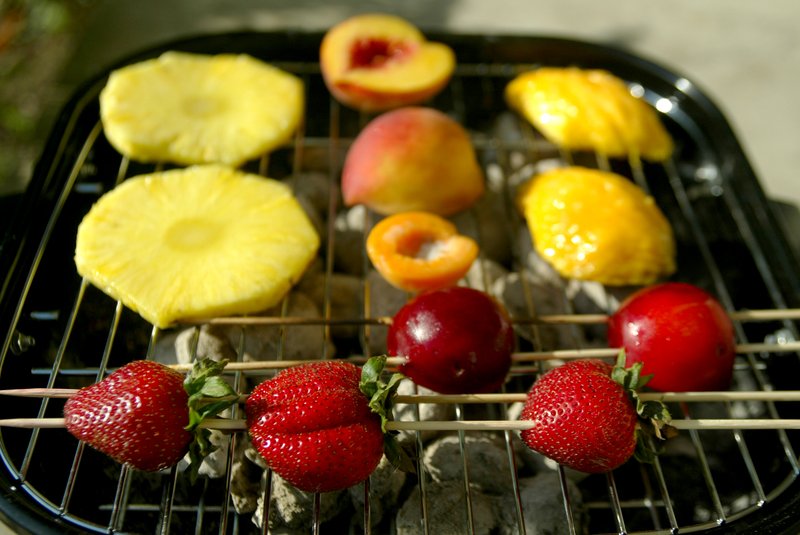There are die-hard grillers who don't see why a little rain, cold or sleet should stand between them and a juicy grilled steak. The rest of us throw a cover over our grills and wheel them into a garage or storage spot, wheeling them out months later as the mercury climbs back up.
None of us, however, can assume that last year's grill is ready to roll as soon as we fire it up.
What to do to get your grill ready for service again:
A THOROUGH ONCE OVER
Look for signs of rust or cracks in the metal or fuel lines. It's also possible that little critters may have found their way into the grill, and need removing. Get the least squeamish person in the family to do that.
WIPE IT DOWN
Amanda Haas, a cookbook author who works with Traeger Grills, says: "Lots of grills are covered in grease, dust and pollen when you lift that cover after a long winter hibernation, so give the outside a thorough scrub down. Keeping it clean will extend the life of the grill and help prevent accidents due to sticky or greasy surfaces."
You probably can get away with warm soapy water, but there are also products for cleaning specific kinds of grills.
The inside of the lid will likely have buildup from the previous year. Not only does it look gross, it also can be a fire hazard. Use a sturdy brush to clean it. A paint scraper is also handy for cleaning out built-up gunk.
THE NITTY-GRITTY
Do all of the following with the gas off, if applicable.
Clean the "flame tamers," right over the gas burners underneath the metal grilling grates. A skewer, toothpick or paper clip are good for making sure all the little holes in the burners are open and unclogged. There are also tiny wire brushes made for this purpose. Later, when you test the grill, peek to see if any holes are still clogged. Then, once the gas is off again, give those openings an extra go-over.
Start the season with clean grates — for sanitary reasons and because you want to kick off your grilling with a beautiful clean grill and beautiful clean grill marks on your food. For a gas grill, turn all the burners to high, shut the lid and let the grill heat for 15 minutes. Open the lid and hopefully everything stuck to the grill will have burned off. Then, just give it a good scrubbing with a grill brush or grill scraper. Make sure no bristles get stuck on the grill rack. A wadded-up piece of aluminum foil held with tongs also does a good job.
Empty the grill of all ash and debris from the previous year.
Make sure that grease pan is empty! Ideally, you would have emptied it at the end of last season, but in case you forgot, this is a big one, as grease fires are a hazard. Check this about once a week if you grill regularly.
CHECK THE FUEL LINE
One insider tip for making sure your gas line is uncompromised is to brush the outside of the gas tubes with soapy water and then run the gas. If you see any bubbles along the tubes, there are leaks and the tubes need to be replaced. If you see bubbles where the tubes connect into the grill or gas tank, these might just need tightening.
STOCK UP ON FUEL
If you need a new tank of fuel, go grab it before you marinate those chops (and consider a backup tank so you never get caught short in the middle of a fleet of sausages).
If briquets, wood or pellets are your fuel of choice, lay in a supply of those. Jay Buzaid, owner of Powerhouse Appliances in New Milford, Conn., says that if you use hardwood charcoal or pellets, then take a close look at any unused fuel from the previous year. If there's any mold, it all needs to be tossed. If it's clean and dry, use it.
He tells customers that wet hardwood charcoal can be dried out, but he recommends tossing wet pellets. Regular grill use can help prevent this problem, and he also suggests storing pellets in the manufacturer's bag, which is designed to help them stay dry.
FIND A SAFE PLACE
If possible, your grill should be at least 10 feet from your house and not near an open window. It should be situated on a fireproof and stable surface such as concrete or brick, if possible. Make sure it's somewhere you can monitor at all times when the grill is going. And make sure there isn't an overhang, to prevent fire or carbon monoxide buildup.
So now that you're ready to grill, the only big decision left is ... what's for dinner?
Food on 05/22/2019

